Editor’s Note: For a more up-to-date version of this topic, see:
Ergonomists have recognized the benefits of postural changes for many years, and have been recommending flexible workstation designs that support easy transition from sitting to standing as one solution to the sedentary office environment. Furniture that adequately accommodates sit-to-stand working postures for a wide range of body sizes and tasks has historically been somewhat scarce and expensive, but that is now changing. As more people recognize the benefits of standing, the demand is increasing, and so is the supply and market innovation — and prices are coming down.
I’ve come across many home-made standing workstations, and even helped build a few, but they tend to suffer from stability issues and invariably lack the flexibility and adjustment range needed to accommodate both sitting and standing postures. For some people standing all the time, or sitting all the time, may be appropriate. But, for most, being able to easily change from sitting to standing is more beneficial.
Ease of use is a critical factor when choosing a sit-to-stand workstation. If tools of any kind are required to adjust the system, it’s very unlikely that users will change postures at all, let alone frequently, as many experts recommend. Some adjustable systems utilize manual hand cranks. However, most of these systems require so many crank revolutions that it’s difficult and time consuming to make the necessary adjustments, and users therefore typically don’t. The most effective adjustment systems currently on the market are electric or counterbalanced/spring balanced.
Several trends and factors are converging to make sit-to-stand workstations a more recognized, viable and cost effective choice.
- Research indicating sitting and sedentary lifestyles contribute to health issues and may even reduce life span.
- Productivity — standing can increase energy, improve thought processes and foster teamwork.
- Musculoskeletal disorders that result from long term static postures, whether they be related to sitting or standing postures.
- Obesity — standing burns more calories than sitting and can assist in weight control.
- An aging workforce — movement and activities that require balance skills can help our aging bodies.
- Ease of use — systems are getting easier and more effective to use.
- Cost — prices have been dropping in recent years, and continue to trend lower as demand increases.
In order to be effective across different tasks and users, a sit-to-stand workstation should be adjustable in several ways. The absolute minimum adjustments should include:
- Keyboard and mouse height
- Monitor height
For greater flexibility and better fit, purchase or piece together a system with these adjustment options:
- Keyboard and mouse height
- Keyboard tilt
- Keyboard and mouse depth
- Monitor height
- Monitor depth
- Monitor orientation
If you seek a fit for a variety of people, body sizes and tasks, you should purchase or piece together a system that accommodates computer users from a 5th percentile female in a sitting posture to a 95th percentile male in a standing posture, which equates to a keyboard height adjustment range from roughly 22″ to 46.5″ above the floor for the USA population.
If you’re considering purchasing a sit-to-stand workstation, there are several varieties you should consider:
- Dedicated Systems (see examples below)
- An integrated system that includes keyboard and monitor height adjustability in a single unit.
- An adjustable height table. The adjustable table provides keyboard and worksurface height adjustability, but users will also benefit with the addition of an adjustable monitor arm. It isn’t necessary to have a separate keyboard tray installed, although some users prefer the added flexibility this option provides.
- Retrofit System (see examples below)
- A desktop system that includes adjustable keyboard, mouse and monitor features.
- A fixed height table with the addition of an adjustable keyboard tray and adjustable monitor arm. The adjustment range for the keyboard and monitor height must adjust between sitting and standing postures.
- Cubicle retrofit, which replaces a fixed worksurface height with an adjustable worksurface height. This arrangement will also benefit from an adjustable monitor arm, and some may also prefer to add an adjustable keyboard tray.
Example Dedicated/Freestanding Sit-to-Stand Systems
 |
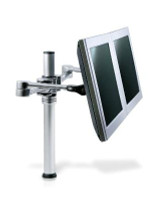 |
|
| ConSet | Adjustable Keyboard and MouseTray Options | Adjustable Monitor Support Options |
Example Retrofit Systems
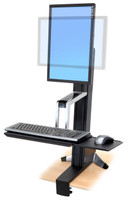 |
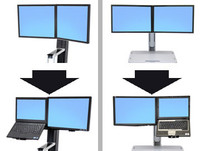 |
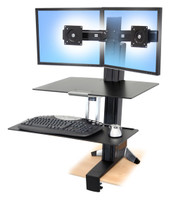 |
| Single Monitor Support |
Laptop and Monitor Support | Dual Monitor Support |
| Computer TaskMate (Health Postures) |
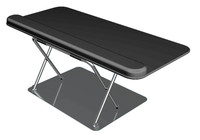 |
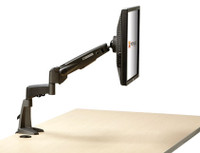 |
|
| StandUp (NeutralPosture) | Scissor Lift (SpaceCo) | Adjustable Monitor Arms |
